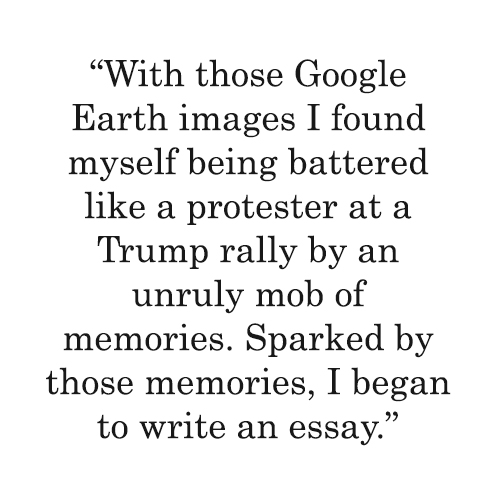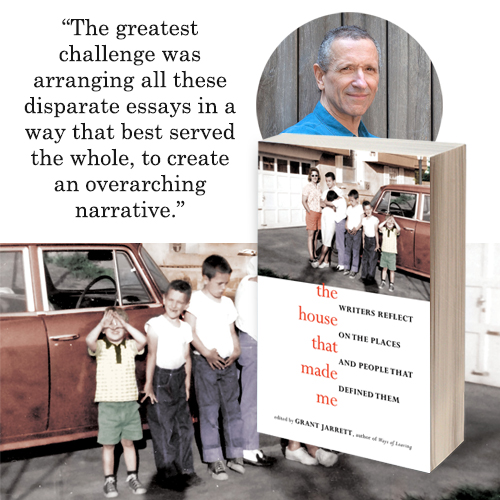March Madness is still in full swing, which means that everyone is still obsessing over baskets and brackets. Meanwhile, we at SparkPress are still giving a crash course in the madness of publishing! In this week’s Behind the Book, we’re covering a very specific kind literary of madness: the anthology.
For those who are unfamiliar with the term “anthology,” it’s basically just a fancy word for a collection of short stories, poems, essays, etc. Anthologies can be a great tool for new and established authors in terms of their writing and exposure. Being grouped with other talented writers not only boosts credibility, but also presents the opportunity for their writing to reach readers that it may not have otherwise (i.e. fans of another author in the anthology).
Although anthologies are exciting for both writers and readers, putting one together is no small feat! In fact, it can get a little hectic and scatterbrained at times. To get the full scoop, we touched base with author Grant Jarrett about the process of editing his upcoming anthology, The House That Made Me, which features essays from award-winning authors such as Tim Johnston and Laura Miller about the concept of home. In this interview, Jarett proves that anthologies really are their own special kind of madness.
Is this the first anthology you’ve been involved in, or organized?
GJ: About 273 years ago, when I was in my teens, Donald Capone invited me to contribute to a short fiction anthology entitled Rebellion. All I had to do was send him a story. It was painless. It was fun. I suffered no permanent scars and had no recurring nightmares. That, I have since learned, is the best way to be involved in an anthology.
How did the idea for The House That Made Me come about?
GJ: One afternoon I decided on a whim to show my 12-year-old son the house where I was born. Using Google Earth, we sat at my desk exploring the home and the neighborhood that occupied my earliest recollections. When I returned that evening to spend some time alone with those images I found myself being battered like a protester at a Trump rally by an unruly mob of memories. Sparked by those memories I began to write an essay. I was gratified by what ultimately emerged, but I also sensed there might more to the idea.
Do you feel like the end result evolved much further than your original vision?
GJ: I certainly didn’t envision this book when I first sat down at the computer with my son, and I didn’t plan anything beyond my own essay as I was writing, but the concept that materialized in my mind in the following weeks is not so far from the book that resulted.

How did you decide which authors would be a good fit?
GJ: I began by choosing people I respected and attempting to achieve some sort of overall balance of backgrounds, ethnicities, and geographical origins. I also wanted to avoid creating a collection that was too dark or too light. My only slight lingering disappointment is that although I assembled a diverse group I would have liked to have been able to bring authors in from every continent, every country, every kind of background and experience.
How did you start reaching out to authors?
Most of the authors I contacted are social media “friends.” A few of them I’d met or worked with in one way or another. A number of them had never heard of me before, I’m certain. Armed with a combination of social media contacts and email addresses I’d purloined from the Internet, I sent out messages describing my project and my general plan. I personalized the requests, stressing my intention to give the writers total freedom in how they responded to the “prompt,” which was to view Internet images of their first home, or a particularly meaningful home, one that helped shape their lives, and write whatever that experience ignited.
As I was reaching out, quite a few authors rejected me, most very politely, and for a variety of reasons. Some explained that they were too busy and some said or the project wasn’t a good fit for them. A few authors never responded. I was prepared to be annoyed about some of these bumps until I realized how many requests people must get from strangers wanting something from them, often for free. In any case, I doubt these roads are ever smooth or direct.
What’s your best tip for organizing an anthology and authors?
GJ: Give your authors a deadline about six months before the real one and assume a few of them won’t make the real deadline anyway. People are busy, and these are artistic people, which is to say, they don’t have calendars. Or clocks. And try to roll with the punches. That should reduce the bruising if not the pain.

What’s your favorite thing about an anthology?
GJ: What appeals to me about having various authors tackle a theme is the idea that however disparate our experiences, we share universal needs and desires, that and the prospect of braiding vastly disparate stories into a compelling whole.
What was your biggest challenge or frustration?
GJ: Editing the work of 18 very different, very talented writers was not easy. Although my suggestions were received very well by everyone involved, each time I suggested the slightest change I lived in terror of a hostile response. But the greatest challenge was arranging all these disparate essays in a way that best served the whole, creating an overarching narrative. It was like being asked to compose a song using random unrelated notes, chords, and rhythms, all played on different instruments.
Or trying to make cookies out of a little chocolate, a little ketchup, some pickles, a blowfish, and a bagpipe. Suddenly I’m hungry.
It’s time for March Madness and while most of the country is filling out brackets and placing bets, we’re taking a look at the MADNESS of publishing. We’re giving you a play-by-play of all the industry highlights you need to know to stay competitive. Swish!


Leave A Comment